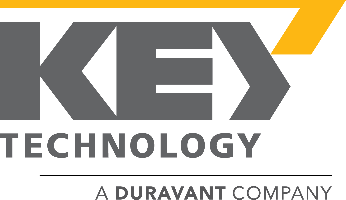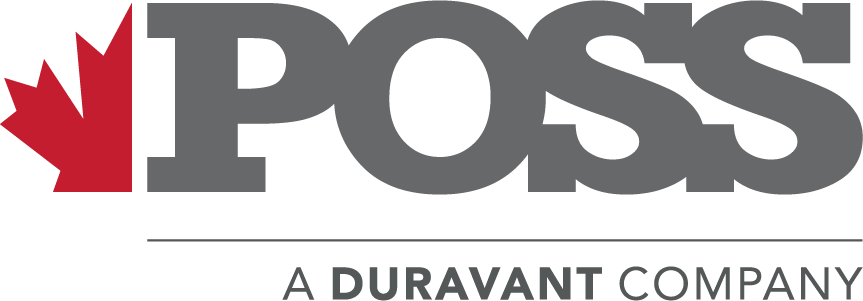The Duravant family of operating companies serve the food processing, packaging and material handling segments.
Understanding the Fundamentals of Welding Sheet Metal Techniques for Beginners
Welding sheet metal is an essential skill in various industries, including manufacturing, construction, and automotive sectors. According to the American Welding Society, around 400,000 welders were employed in the U.S. as of 2021, highlighting the significant demand for skilled professionals in this field. As industries evolve, the need for efficient and precise welding techniques has become more critical, particularly in working with thin materials. Mastering the fundamentals of welding sheet metal not only enhances the quality of work but also improves efficiency, safety, and cost-effectiveness. This guide aims to equip beginners with the necessary knowledge and techniques to succeed in welding sheet metal, emphasizing the importance of understanding equipment, materials, and safety protocols. With the right approach, novices can quickly gain confidence and expertise, paving the way to a rewarding career in welding.
Basics of Welding: Tools and Equipment You Need
When starting with welding sheet metal, understanding the essential tools and equipment is crucial for beginners. The most fundamental tool is the welding machine, which can either be a MIG (Metal Inert Gas) welder or a TIG (Tungsten Inert Gas) welder. MIG welders are often preferred by beginners due to their ease of use and the speed at which they can complete projects. They utilize a spool of wire that automatically feeds, making it easier to maintain a consistent weld. TIG welders, while more complex, allow for greater precision in applications where detailed work is required.
In addition to the welding machine, safety gear is vital for any welder. A sturdy welding helmet protects the eyes from harmful UV rays and bright light, while leather gloves safeguard the hands against sparks and heat. Welding jackets are also recommended to protect the welder’s clothing and skin from spatter. Other essential tools include clamps for holding pieces together, grinders for smoothing edges, and a variety of welding rods or filler materials that match the type of metal being welded. Together, these tools and equipment provide a solid foundation for anyone looking to dive into the world of welding sheet metal.
Understanding the Fundamentals of Welding Sheet Metal Techniques for Beginners - Basics of Welding: Tools and Equipment You Need
| Tool/Equipment | Purpose | Skill Level | Cost Range ($) |
|---|---|---|---|
| MIG Welder | Used for metal inert gas welding, ideal for beginners. | Beginner | 200 - 800 |
| TIG Welder | Used for tungsten inert gas welding. Offers high control for thin materials. | Intermediate | 400 - 1500 |
| Plasma Cutter | Cuts through metal using a high-velocity jet of hot plasma. | Advanced | 300 - 1200 |
| Welding Helmet | Protects the face and eyes from UV radiation and sparks. | All Levels | 30 - 150 |
| Welding Gloves | Protects hands from heat and sharp metal edges. | All Levels | 10 - 50 |
Preparation Steps for Welding Sheet Metal Like a Pro
When preparing to weld sheet metal, the first step is to ensure that you have the right materials and tools at hand. Start by selecting the appropriate sheet metal based on your project requirements, keeping in mind the thickness and type of metal. Gather essential tools such as a welding machine, safety gear, clamps, and a grinder. Safety equipment is crucial; remember to wear a welding helmet, gloves, and protective clothing to safeguard against sparks and UV radiation.
Next, proper cleaning and fitting of the metal pieces are vital for achieving a strong weld. Use a wire brush or grinder to remove any rust, paint, or grease that may hinder the welding process. Once clean, align the metal pieces accurately and secure them with clamps to prevent movement during welding. It's advisable to perform a test weld on scrap pieces to adjust your settings and practice your technique. These preparation steps will set the foundation for effective welding, allowing beginners to approach their projects with confidence and skill.
Essential Welding Techniques for Sheet Metal Beginners
Welding sheet metal is a vital skill for beginners looking to enter the world of fabrication and repair. Essential welding techniques include methods like MIG (Metal Inert Gas) and TIG (Tungsten Inert Gas) welding, each serving different purposes and offering unique advantages. Understanding these techniques can help beginners choose the right approach for their projects, whether they're working on automotive repairs, artistic sculptures, or metal furniture.
Tips: Always start by practicing on scrap pieces of metal to familiarize yourself with the welding equipment and settings. Adjust your voltage and wire feed speed based on the thickness of the sheet metal you're working with. Experimenting with these parameters can lead to smoother and more effective welds.
Another crucial aspect for beginners is mastering the proper safety measures. It’s essential to wear protective gear, including gloves, helmets, and long sleeves, to shield yourself from sparks and intense heat. Additionally, ensuring adequate ventilation in your workspace can help reduce inhalation risks from fumes produced during welding. Adhering to these safety protocols will foster a more secure and enjoyable learning experience.
Safety Precautions Every Beginner Welder Should Follow
When embarking on the journey of welding sheet metal, safety should be a paramount concern for every beginner welder. According to the American Welding Society, nearly 70% of welding-related injuries are attributed to poor safety practices, highlighting the need for awareness and precaution. Proper Personal Protective Equipment (PPE), including helmets with appropriate filters, gloves, and flame-resistant clothing, is essential to protect welders from harmful sparks, heat, and ultraviolet radiation produced during the welding process.
In addition to wearing the right gear, beginners should familiarize themselves with the specific hazards associated with their workspace. The Occupational Safety and Health Administration (OSHA) reports that around 40% of workplace injuries in the welding industry occur due to falls or improper handling of equipment. Maintaining a clean and organized work area, ensuring proper ventilation to escape harmful fumes, and being aware of fire hazards are all critical steps. Beginners should also be trained in the use of fire-extinguishing tools and emergency protocols to minimize risks. By following these safety precautions, novice welders can significantly reduce their chances of injury and enhance their welding experience.
Common Mistakes to Avoid When Welding Sheet Metal
When beginning the journey of welding sheet metal, it's essential to recognize common mistakes that can undermine the quality of your work. One prevalent error is improper preparation of the metal surfaces. Ensuring that edges are clean and free of contaminants is critical for achieving a strong weld. Failing to prepare the material can lead to weak joints and inconsistent welds, making this a fundamental step that beginners often overlook.
Another common mistake involves incorrect settings on welding equipment. New welders may not fully understand the importance of adjusting voltage and wire feed speed according to the thickness and type of metal. Using incorrect settings can result in burn-through or insufficient penetration, leading to structural failures. Additionally, neglecting to practice proper technique, such as maintaining a steady travel speed and appropriate angle, can affect the overall appearance and strength of the weld. By being aware of these pitfalls, beginners can significantly improve their welding skills and outcomes.











